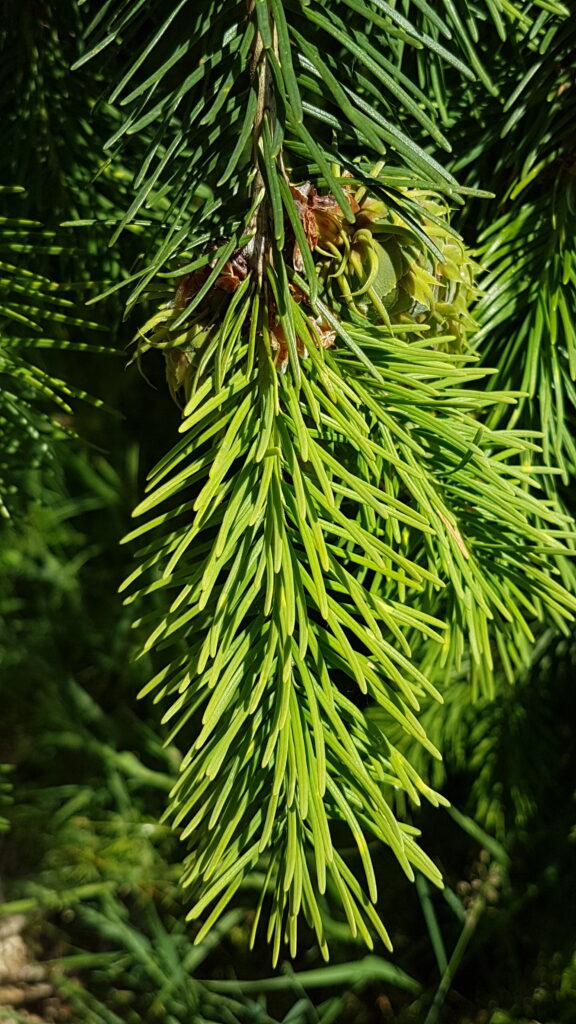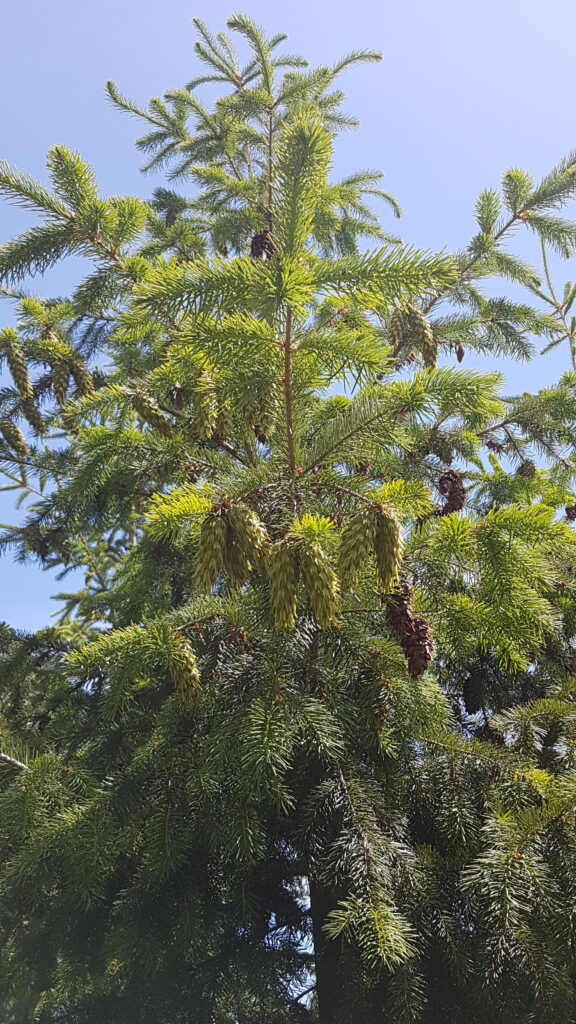
Coastal Douglas-fir (Pseudotsuga menziesii)

The Douglas-fir tree is a tall coniferous tree with ridged brown bark. Douglas-fir is not actually a fir tree, but is instead in the pine family. The needles are flat and grow out from the branches in all directions, and the underside of each needle has two white stripes along its length. The cones hang down from the branches (unlike true fir trees, which have cones that grow upright from branches), and have small three-pronged bracts attached to each scale. These bracts are often said to look like the tail and hind legs of a mouse.

Wood from Douglas-fir trees was used by First Nations groups on the northwest coast to make spear handles, harpoon shafts, fish hooks, and salmon weirs. The pitch was used as caulking in canoes, and as a salve for wounds. Finally, the young needles are high in vitamin C, and could be made into a tea for treating colds.

Douglas-fir trees can live for more than a thousand years, and are a keystone species in the old-growth forests of British Columbia. The southeastern coast of Vancouver Island, including Victoria, is in the Coastal Douglas-fir biogeoclimactic zone, which is defined by the presence of coastal Douglas-fir ecosystems. These ecosystems are important because they have a large amount of biodiversity and provide habitat for many species, including many which are at risk in BC. They are also valuable to people, because they absorb and filter rainwater, purify the air, and provide us with many natural resources.
For more information, visit Native Plants PNW or E-Flora BC.


